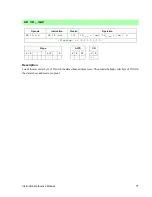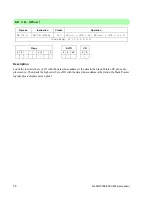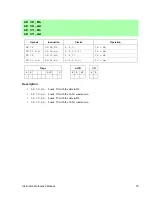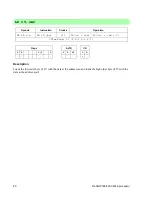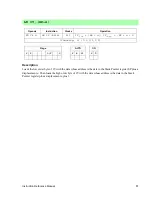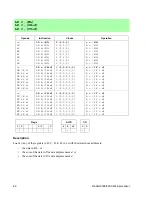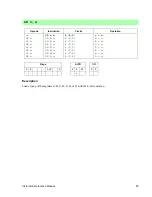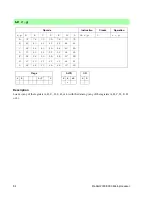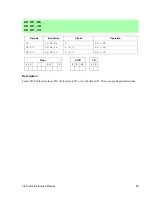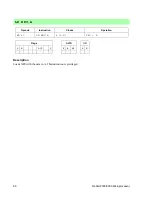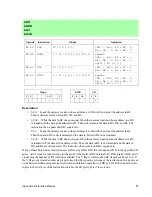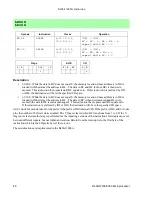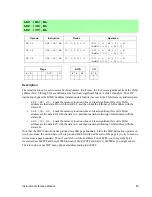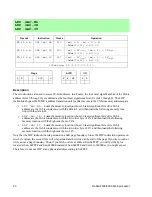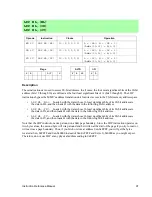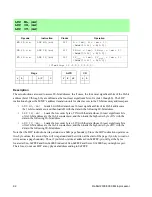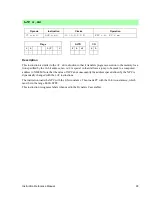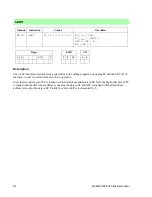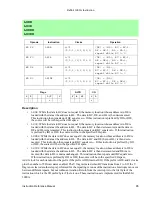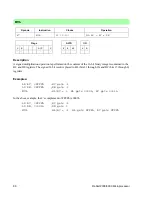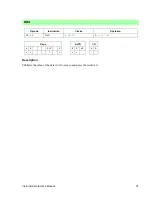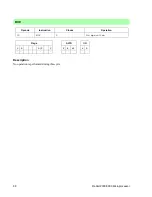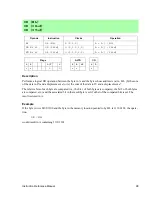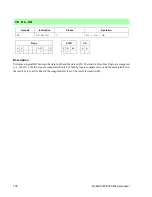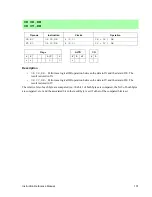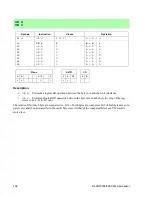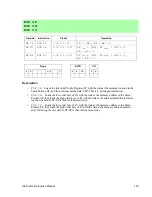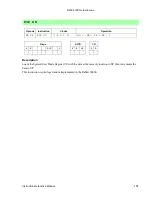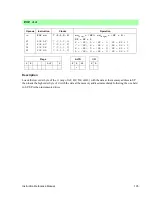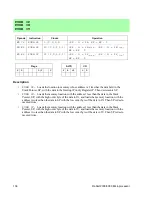
Instruction Reference Manual
91
Description
These instructions are used to access 20-bit addresses. In all cases, the four most significant bits of the 20-bit
address (bits 19 through 16) are defined as the four least significant bits of A (bits 3 though 0). The LDP
instructions bypass the MMU’s address translation unit for direct access to the 20-bit memory address space.
•
LDP HL,(HL):
Loads L with the data whose 16 least significant bits of its 20-bit address are
the data in HL, and then loads H with the data in the following 20-bit address.
•
LDP HL,(IX):
Loads L with the data whose 16 least significant bits of its 20-bit address are
the data in IX, and then loads H with the data in the following 20-bit address.
•
LDP HL,(IY):
Loads L with the data whose 16 least significant bits of its 20-bit address are
the data in IY, and then loads H with the data in the following 20-bit address.
Note that the LDP instructions wrap around on a 64K page boundary. Since the LDP instruction operates on
two-byte values, the second byte will wrap around and be written at the start of the page if you try to read or
write across a page boundary. Thus, if you fetch or store at address 0xn,0xFFFF, you will get the bytes
located at 0xn, 0xFFFF and 0xn,0x0000 instead of 0xn,0xFFFF and 0x(n+1),0x0000 as you might expect.
Therefore, do not use LDP at any physical address ending in 0xFFFF.
LDP HL,(HL)
LDP HL,(IX)
LDP HL,(IY)
Opcode
Instruction
Clocks
Operation
ED 6C
LDP HL,(HL)
10 (2,2,2,2,2)
L = (HL); H = (HL + 1).
(Addr[19:16] = A[3:0])
DD 6C
LDP HL,(IX)
10 (2,2,2,2,2)
L = (IX); H = (IX + 1).
(Addr[19:16] = A[3:0])
FD 6C
LDP HL,(IY)
10 (2,2,2,2,2)
L = (IY); H = (IY + 1).
(Addr[19:16] = A[3:0])
Flags
ALTD
I/O
S
Z
L/V
C
F
R
SP
S
D
-
-
-
-
Summary of Contents for 2000
Page 2: ...ii Rabbit 2000 3000 Microprocessor...
Page 4: ...iv Rabbit 2000 Microprocessor...
Page 16: ...12 Rabbit 2000 3000 Microprocessor...
Page 164: ...160 Instruction Reference Manual...

